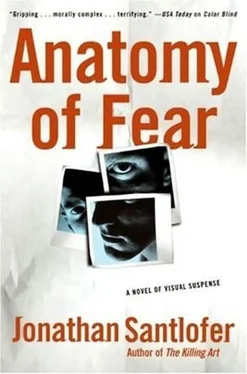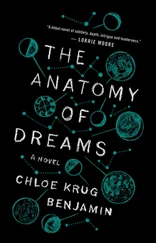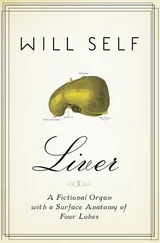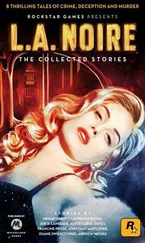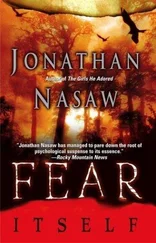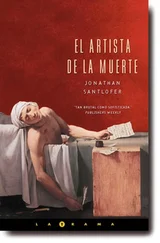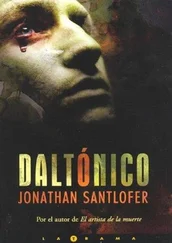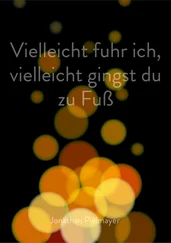“No, but it has nothing to do with you. I’m just upset about the case.”
I didn’t think she was being entirely honest, but didn’t think it was a good idea to say it. “So what do we do?”
“We?”
“I’d like to stay connected to whatever goes on-and I think you could use my help.”
I expected another fight, but she directed her anger at the case.
“What do they expect me to do, sit on my hands while the G brings in more BSS and CIU and the rest of the fucking alphabet? I’m not going to roll over and play dead.” She stopped. “Forget it. I don’t know why I’m telling you this.”
“Because I’m your responsibility, remember?” I added a smile, and after a moment something let go in Terri’s face and her muscles relaxed and she smiled too. Then she got serious.
“So, tell me, did you really see a man on fire?”
“Yeah, and it was totally fucking weird. My grandmother would say it was a spirit sending a message.”
“This happen to you a lot, Rodriguez?”
“No. The pictures I’ve seen in my head have always been connected to a drawing I was making with a witness. But this came out of nowhere. I’ve never seen anything like it.” It was true I had a tendency to see things in line and tone, more like drawings than real life, which I chalked up to extensive art training, but this was a whole other dimension. “Maybe I’m starting to see things.”
Terri looked at me like I was a freak.
“Hey, it’s your fault.”
“Oh? How’s that?”
“Trying to create the unsub’s portrait for you must have triggered a chemical in my brain that just won’t quit.”
“So you’re doing that sketch entirely for me, that it?”
She was right, of course; I was doing it for me as much as for her.
Terri still had that look on her face and I told her to stop, and she told me to stop biting my nails, but in the process we’d gotten past the fight, though we were both a little wary.
I needed to get out of the station to clear my head, and asked if she’d take a break with me.
“Now?”
“Why not? Your big case just went to the G.”
“Thanks so much for reminding me, but I’ve got a deskful of other cases waiting.”
“So let them wait.”
His eyes track them like prey in a rifle’s sight line, and he sees it in his mind’s eye: bullet propelled in slow motion until it reaches its target, then, wham! a direct hit, aorta bursting, blood spurting out of the woman’s heart, white blouse soaked a deep wine red, body thrown back, the look of shock on her face. Then the man, turning to the woman, eyes darting in every direction trying to locate the bullet’s trajectory, and just when he figures it out, just when they make eye contact, it happens: Kaboom! another round fired right into his head!
He blinks and the pictures fade and there they are, the man, sketchbook tucked under his arm, and the woman, crossing the street, getting into a car, no idea they have just been killed.
He waves down a cab. “Follow that car,” he says as he gets in, and forces a laugh. “Sounds like we’re in a movie, huh?”
The driver, head wrapped in a turban, asks, “Where to, sir?”
“I said, follow that car.”
“Whatever you like, sir.”
He stares at loose strands of shiny black hair that have escaped the turban, imagines wrapping a wire around the man’s neck while thinking up the excuse he will give for leaving his desk so suddenly.
With its colonnaded court and Central Park just across the street, El Museo Del Barrio belied any connection to the real barrio only a few blocks east.
“I used to come here when I was a kid,” I said.
“Really? This place has been around that long?” Terri grinned.
“It was started by some Puerto Rican educators and activists around 1969, I think, which happens to be before my time.”
I hadn’t been here in a while, but inside it looked the same-large room, lots of tile trim, nothing fancy. It brought me back.
Julio and I used to come here when we were teenagers and had nowhere else to go and didn’t feel like getting into trouble. It was the only museum where Julio said he felt comfortable. A couple of times we’d gone to the Met, but he said the guards would watch him like he was going to steal something. I said they were probably right.
“This place was a sort of haven for me and my best friend, Julio.” I remembered the time we were looking at a show of art from the Caribbean Islands. The tour guide was speaking to a class, in Spanish, about the pots and artifacts that had been made hundreds of years ago, and what Julio had said.
Yo, mira, you hear what she said: hundreds of years ago? I can’t get my head around that. The teachers at Julia de Burgos, they always saying there weren’t no history, no nothing, so like I figured all the Puerto Ricans were like me, un mamao, y’know, worthless.
That day had made a difference to Julio. And when he got out of Spofford we’d come up here to see the exhibitions. Later, after he got the job with the law firm, he became a member and started donating money.
Terri crossed the room to check out the brightly colored portraits that covered a wall of doors, Soul Rebels, painted by the artist Yasmin Hernandez.
I started pointing them out. “That’s Julia de Burgos, a famous Puerto Rican poet; and Piri Thomas, who wrote Down These Mean Streets; and I think that’s Eddie Palmieri.”
“What’d you do, Rodriguez, study up before you brought me here so you could show off?”
I hadn’t, but she was right that I was showing off.
Terri pointed to another portrait. “Bob Marley,” she said, and started to sing, “‘No Woman No Cry.’ You’re not the only one who can show off.”
We headed into the main gallery, an exhibition of works by Felix Gonzalez-Torres, spare and austere.
Terri pointed at a stack of papers on the floor maybe two-by-three-feet and six inches thick, an image of sand or waves or clouds on top, it was hard to tell. “What’s this?”
“Pick one up.”
“You want me to set off the alarms and get arrested, that it?”
“No, I’m serious.”
She gave me a look, but did it. “Oh. I hadn’t realized it was a stack of the same picture.”
“Gonzalez-Torres wanted his art to be disposable-democratic, you know, just a stack of photocopies.”
Terri rolled up the print. “Maybe I’ll frame it. Free art, why not?” She moved to a wall of small framed statements, and read one: “Center for disease control 1981 streakers 1974 go-go boots 1965 Barbie doll 1960 hula hoop 1958 Disneyland 1955 3-D movies 1952.” She turned to me. “What’s this about?”
“I’d say it’s about juxtaposing fads and cultural phenomena to create unexpected associations.”
“Wow. You’re either too smart for me, Rodriguez, or really full of shit. Forgive me, but art intimidates me.”
“It intimidates lots of people, but you just have to know the language.”
“You mean like the G, with their BSS and CIU bullshit.”
“Exactly,” I said. “For me, art always came naturally, but put an algebra problem in front of me and I go brain-dead. Gonzalez-Torres is a conceptual artist. He works with ideas as opposed to, say, paint and canvas.”
“Sounds a lot cheaper.”
I laughed, and ushered her into another room, walls covered with papier-mâché masks made in the seventeenth century for the carnivals in Ponce, Puerto Rico.
“Jesus!” Terri gasped.
I looked back and forth between a hideous horned fanged devil mask and Terri’s pretty face.
“Can’t tell us apart, huh?”
Читать дальше
